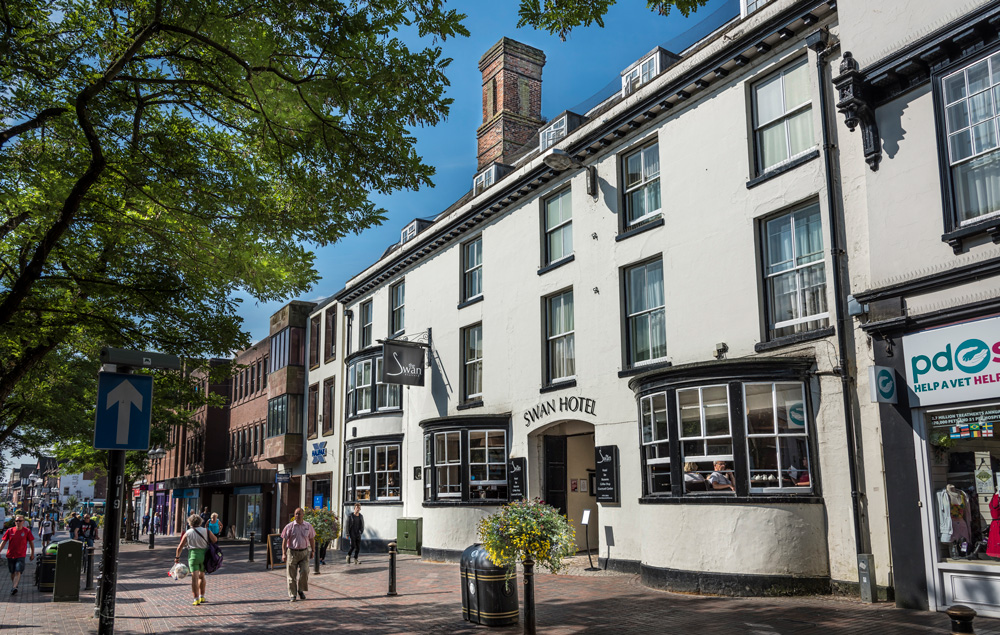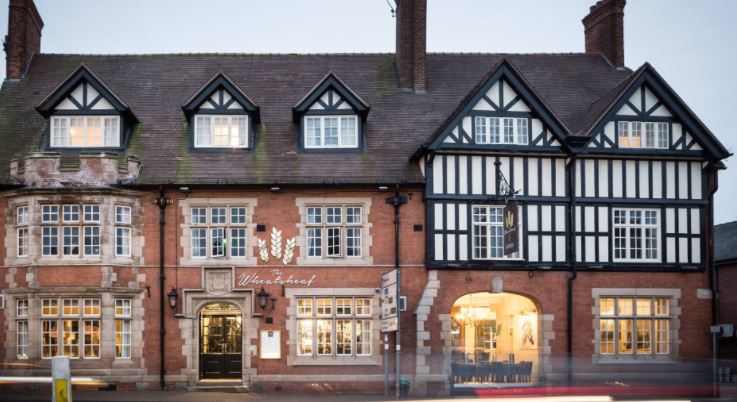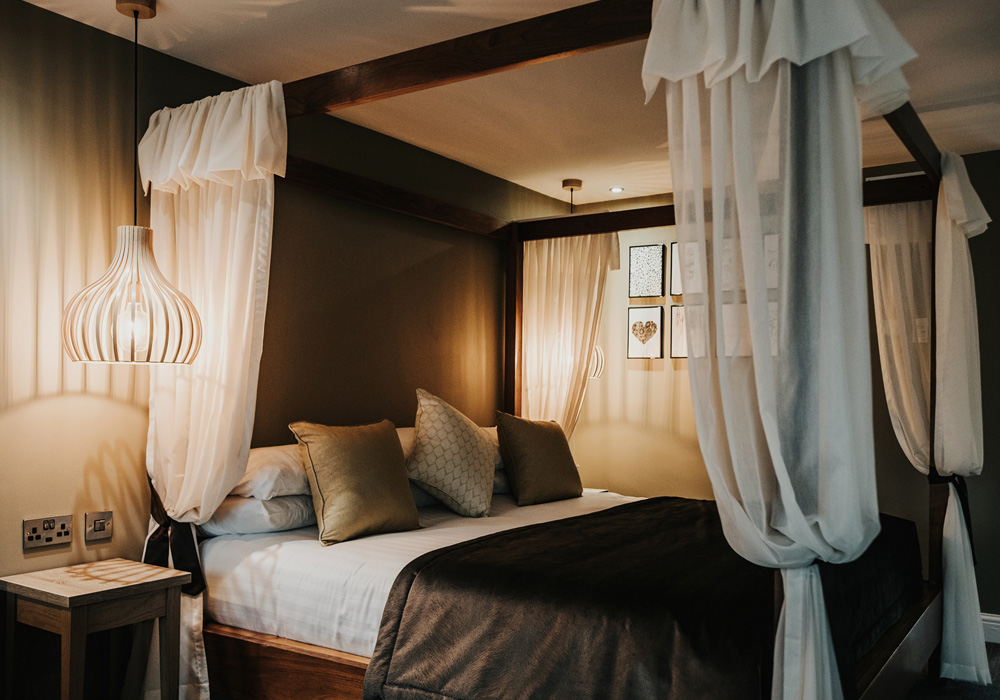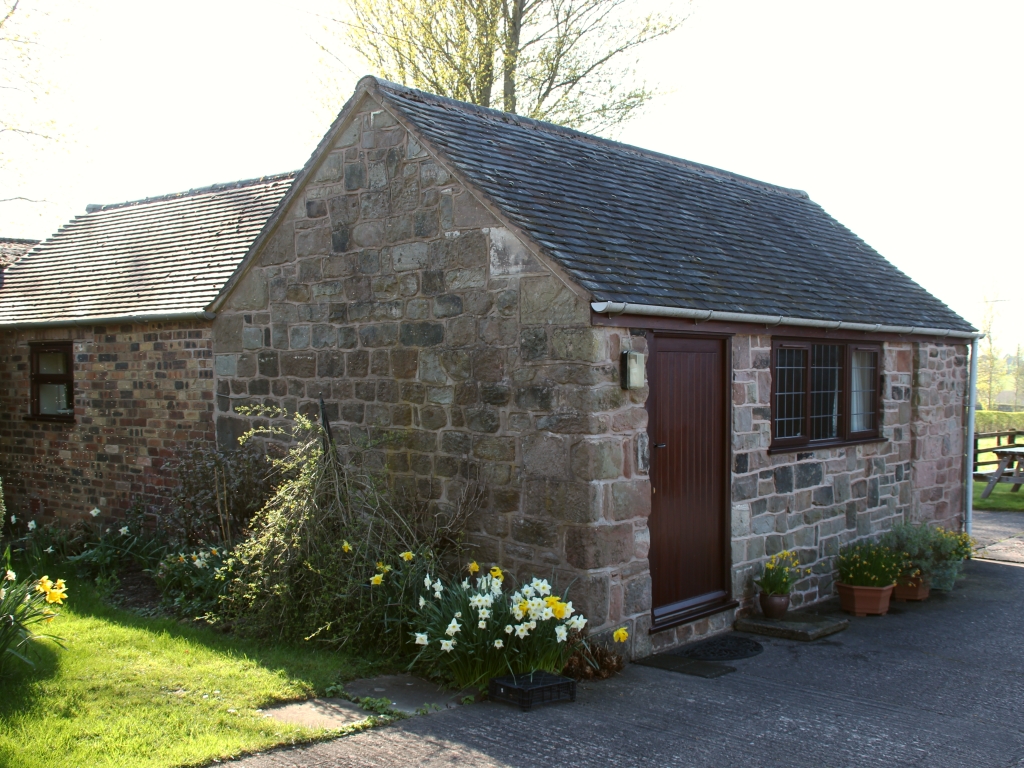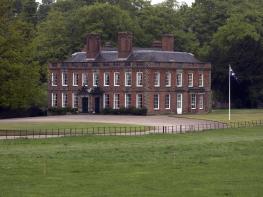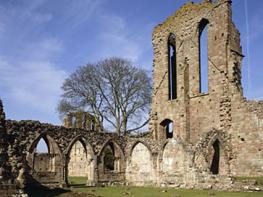Set in 72 acres of stunning Staffordshire Countryside, Moddershall Oaks Country Spa offers spa…
Barlaston and Wedgwood country

A gentle, short walk exploring the life and times of the Staffordshire Potteries’ most famous son.
3.25 miles (5.3kms)
About the walk
During the 18th and 19th centuries white stoneware was all the rage in polite society, thanks in part to an influx of expensive white china from the Orient. In the quest for a cheaper alternative, potters spent decades experimenting with powdered flint from the local mills. Flint, when mixed with clay, helps to whiten it, but there were so many problems with the process and such a high level of wastage that for a time English china was more expensive than silver. In the 1760s, however, Josiah Wedgwood perfected creamware and a few years later, when Queen Charlotte purchased an entire tea set, marketing genius Josiah cannily changed the name to Queen's Ware. The rest, as they say, is pottery.
Josiah Wedgwood
The Wedgwood family came from Burslem, a district of what is now Stoke-on-Trent. Craftsman Gilbert Wedgwood was recorded as the first Master Potter in the family in 1640 – and his most famous descendant, Josiah, was born in 1730. Josiah worked in his father's pottery from the age of nine, and in 1744 he was apprenticed to his older brother Thomas. An attack of smallpox seriously reduced Josiah's output (his right leg later had to be amputated as a result of the illness) but the time it gave him to research and experiment in his chosen craft stood him in good stead in later years.
Broke the mould
After a number of partnerships Josiah set up his own pottery in Burslem in 1759. Until then pottery had been something of a cottage industry, but Wedgwood broke the mould, building – for the first time ever – a pottery factory. And rather than rely on family members, his idea was to pay people to work in the factory, with materials and tools he supplied. This made the whole production process so much more efficient and, ultimately, more lucrative.
A decade later, with business booming, Josiah Wedgwood built a bigger factory in Burslem which he called Etruria (at the time, Greek vases were believed to be Etruscan in origin). This became a model for other pottery manufacturers. Here he applied rigorous, scientific techniques to producing new, innovative pottery. The results of his efforts can still be purchased today and include Jasperware (characterised by unglazed, pale blue stoneware with white relief portraits or classical scenes) and black basalt ware, also known as Egyptian ware, a hard stone-like material used for vases and busts of historical figures. But of course, when Josiah Wedgwood died in Etruria in 1795 his legacy wasn't just limited to porcelain. His success, vision and innovative business practices made him a leading figure of the Industrial Revolution and his impact on the local countryside was immense, not least because of the hundreds of miles of canals that he was – at least in part – responsible for, including the Trent and Mersey and the Caldon canals.
Walk directions
From the visitor centre drive, head left across the lake and then right up the drive towards Barlaston Hall. Go past this hall and continue along the metalled road as far as the crossroads in Barlaston. At the crossroads turn right and after 250yds (229m), just past the Church of St John the Baptist on your left, head left along a wide gravel track.
The track passes through a broad expanse of open farmland, with sweeping (if not altogether dramatic) views of the Trent and Mersey Canal to the right. After about 800yds (732m), before the third gate, go right on a less obvious but waymarked path around the edge of the field to reach a stile. After crossing the stile head right along a wide track, then cross the railway via an underpass, before bearing right to a bridge over the canal. Go over the bridge and take the steps down to the left.
At the bottom of the steps head left and then follow the canal all the way to the first bridge (at Barlaston) and then the second (at Wedgwood Station). Head left here, up to the metalled road, and then right, back towards the visitor centre.
Additional information
Roads, gravel tracks and tow paths, several stiles
Village, farmland and canal
Must be kept on lead near livestock
OS Explorer 258 Stoke-on-Trent
Roadside parking near Wedgwood visitor centre entrance
Wedgwood visitor centre (customers only)
<p>The canal tow path between Point 3 and The Plume of Feathers is closed until November 2013. Either continue down the road through Barlaston from Point 2 to join the tow path at the pub, or at Point 3 stay on the track to the road and turn right along the pavement into Barlaston</p>
WALKING IN SAFETY
Read our tips to look after yourself and the environment when following this walk.
Find out more
Also in the area
About the area
Discover Stoke-on-Trent
Nearby stays
Restaurants and Pubs
Nearby experiences
Recommended things to do
Why choose Rated Trips?
Your trusted guide to rated places across the UK
The best coverage
Discover more than 15,000 professionally rated places to stay, eat and visit from across the UK and Ireland.
Quality assured
Choose a place to stay safe in the knowledge that it has been expertly assessed by trained assessors.
Plan your next trip
Search by location or the type of place you're visiting to find your next ideal holiday experience.
Travel inspiration
Read our articles, city guides and recommended things to do for inspiration. We're here to help you explore the UK.



